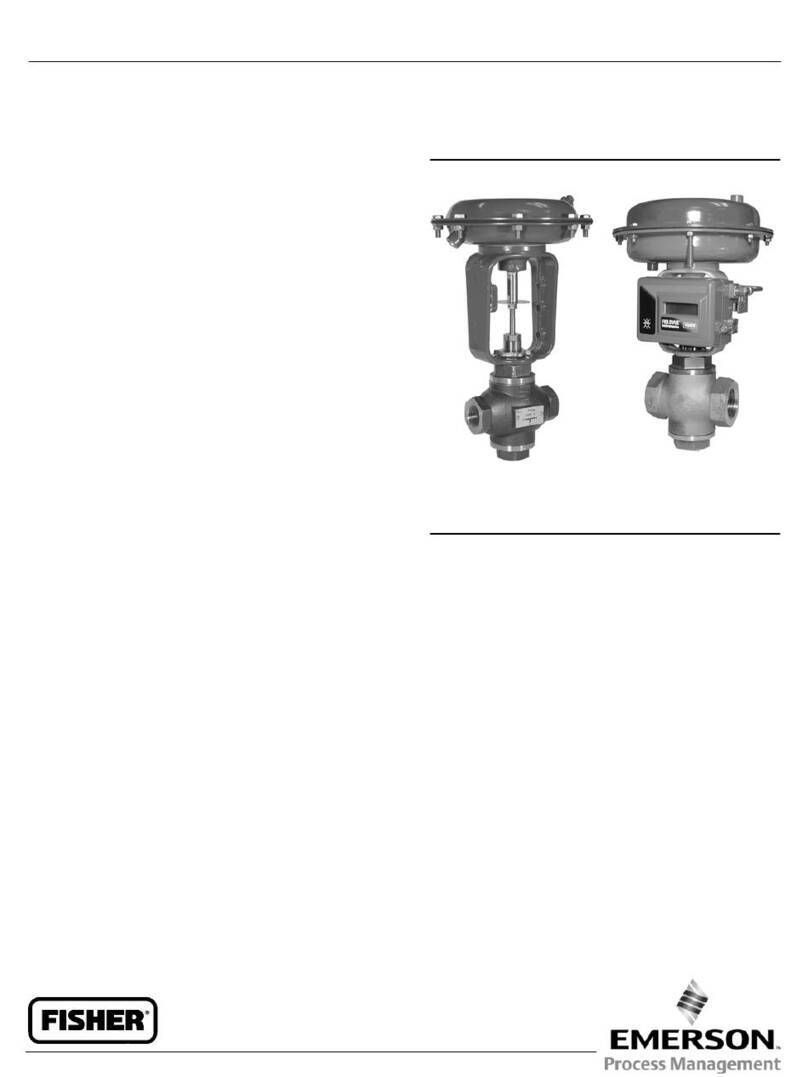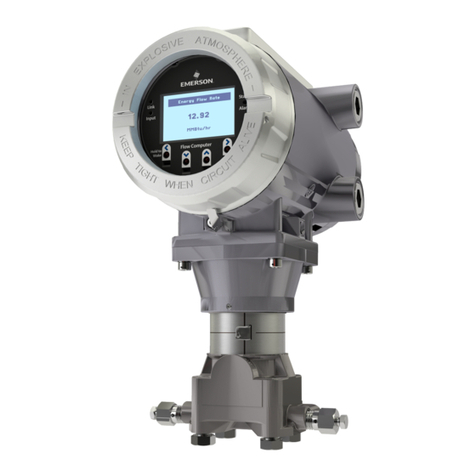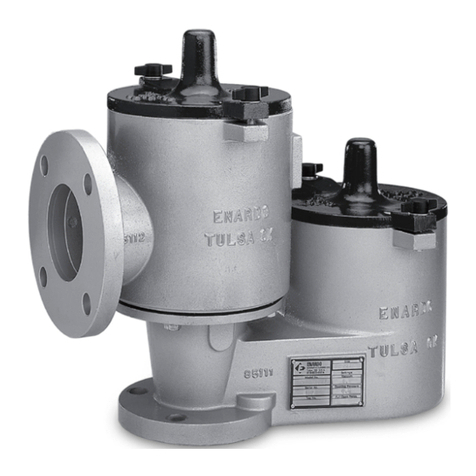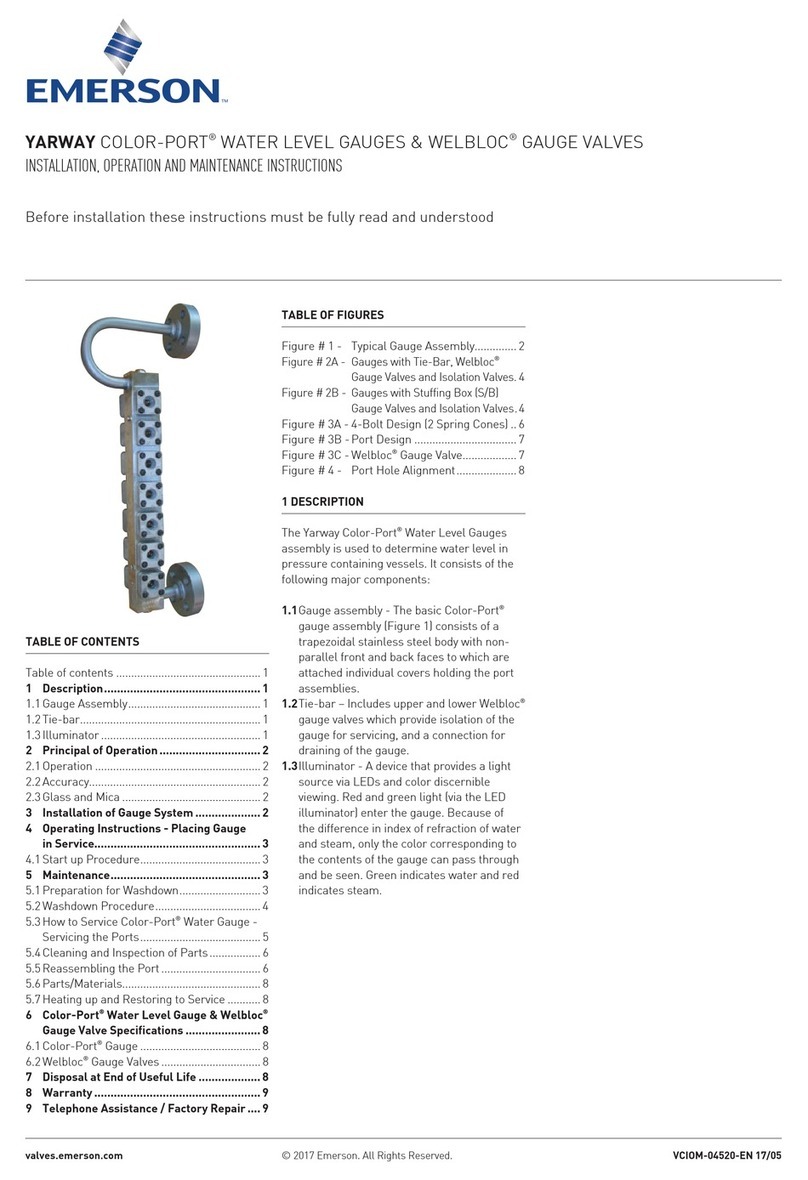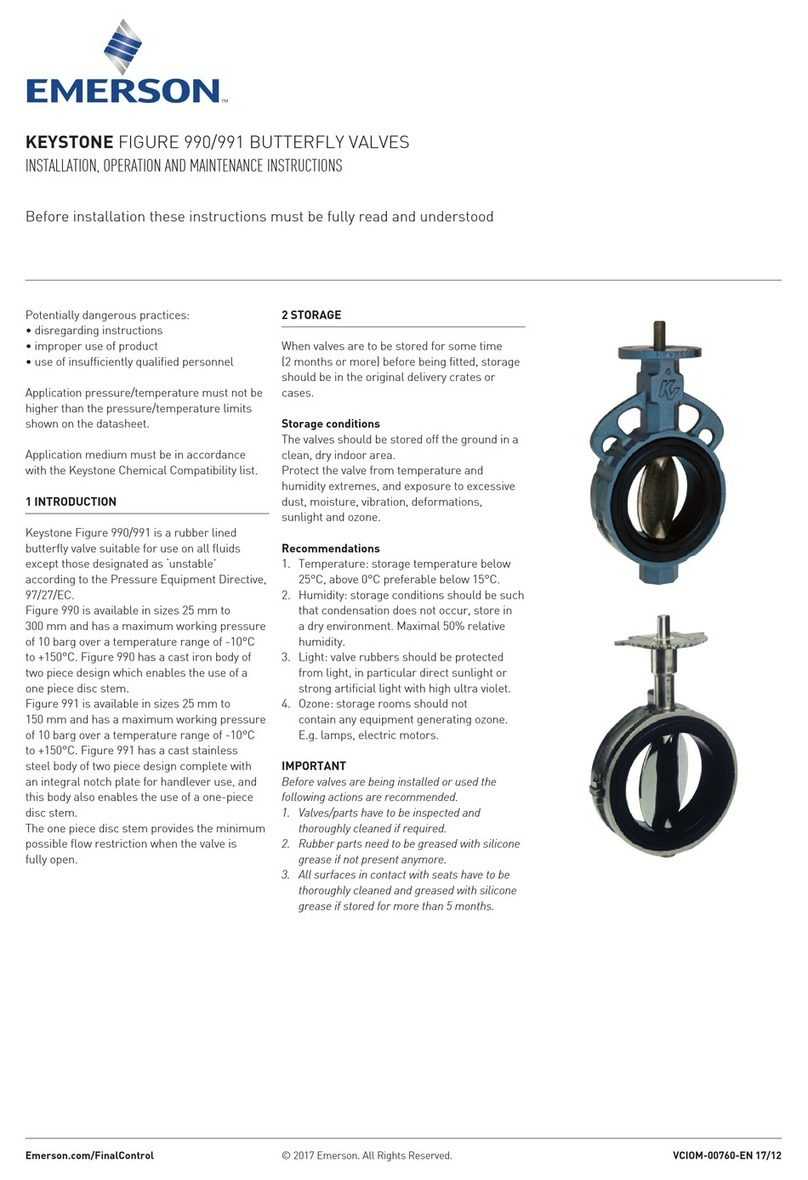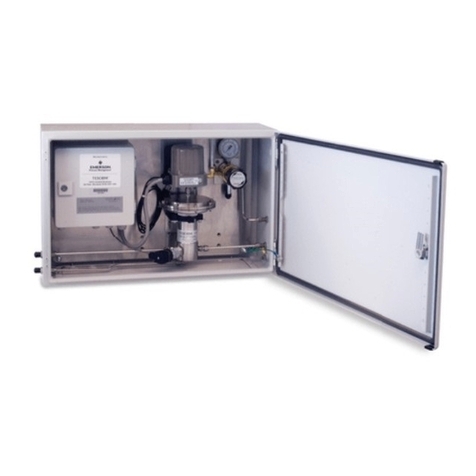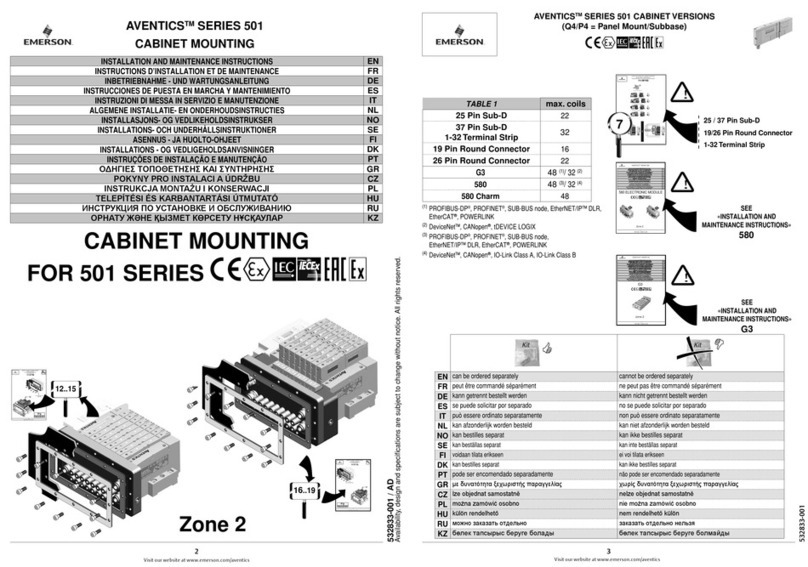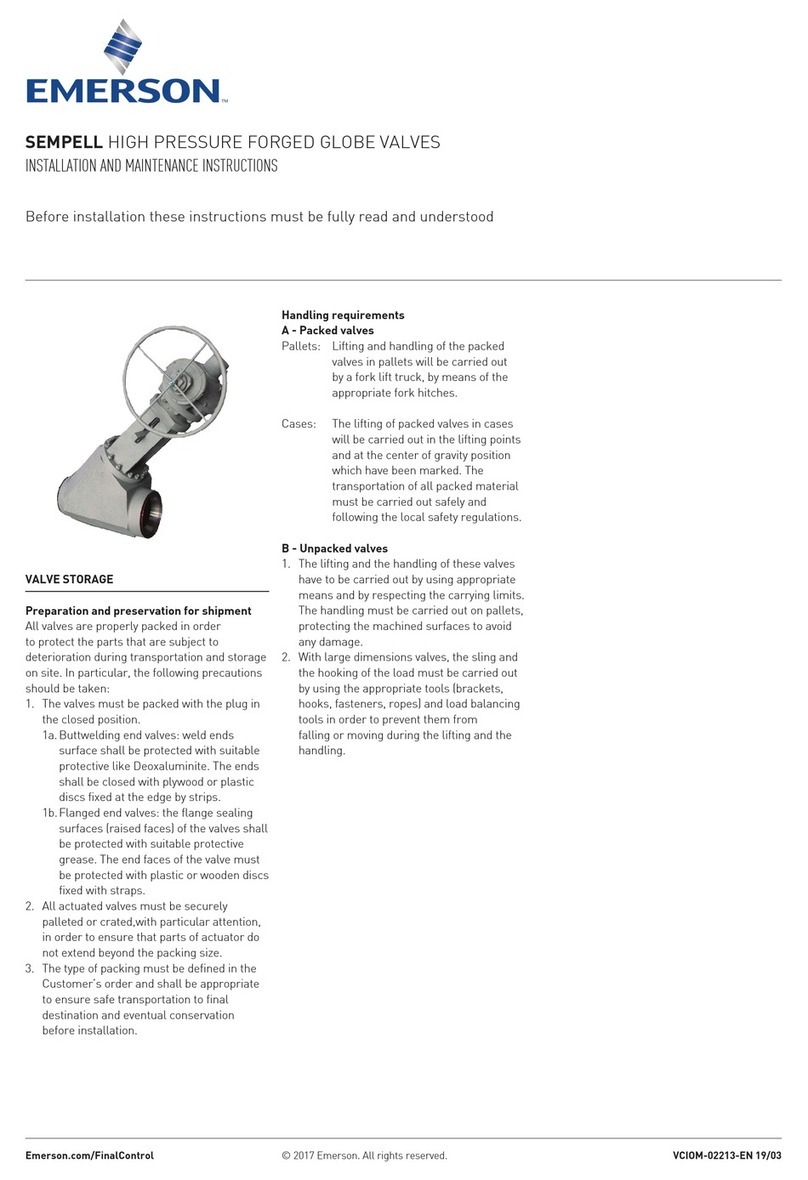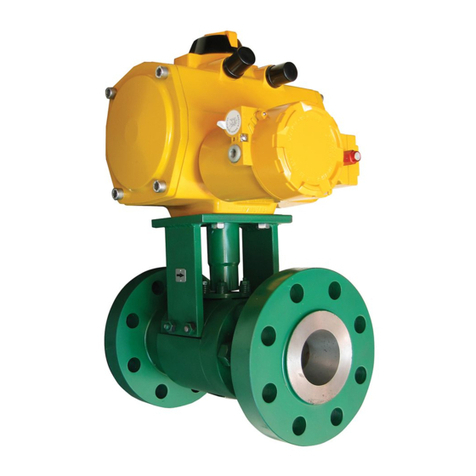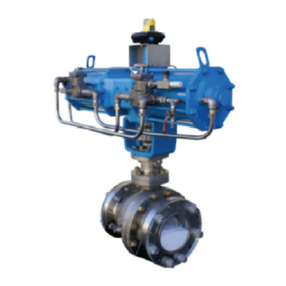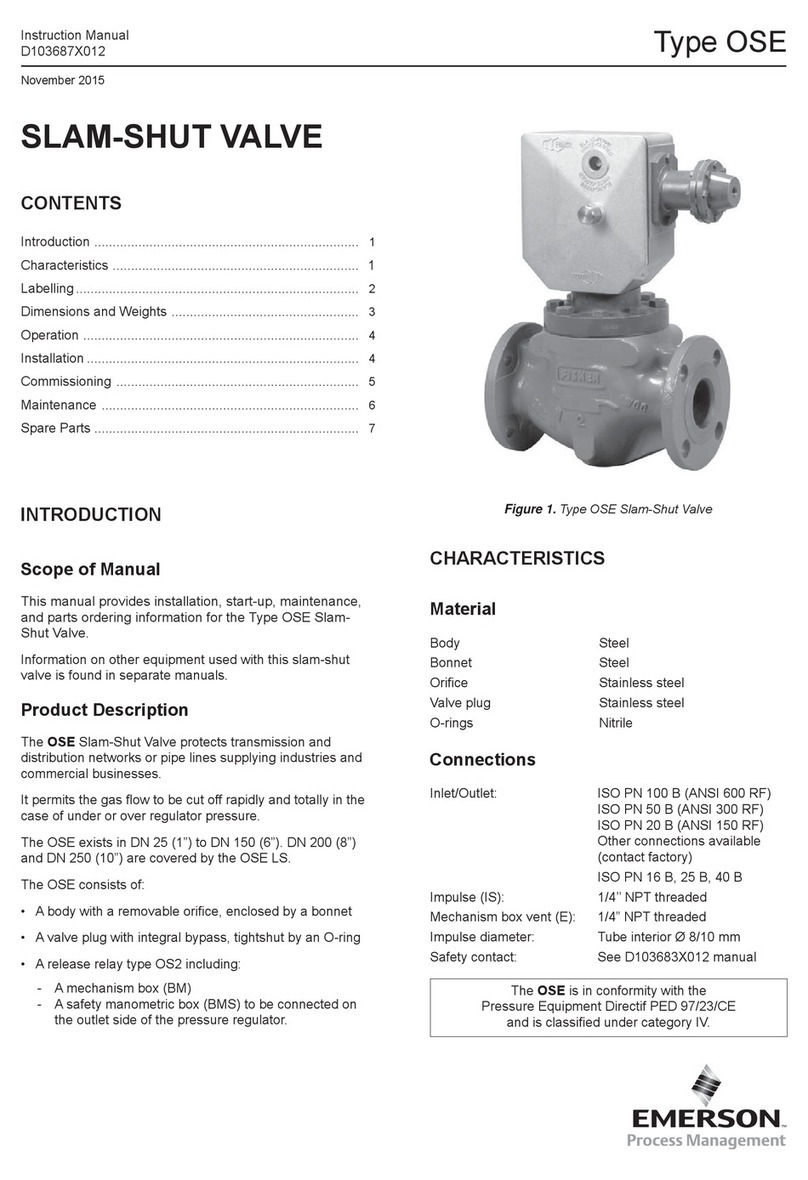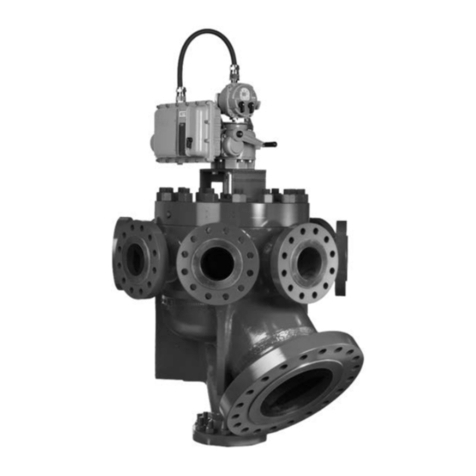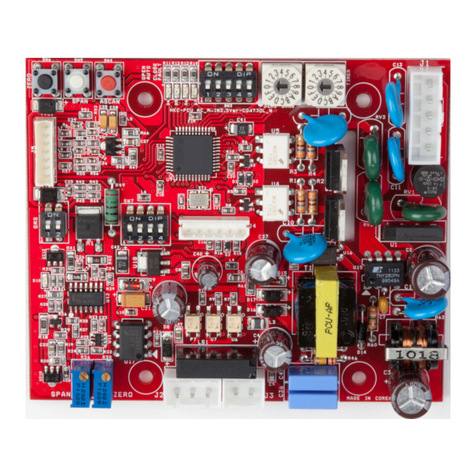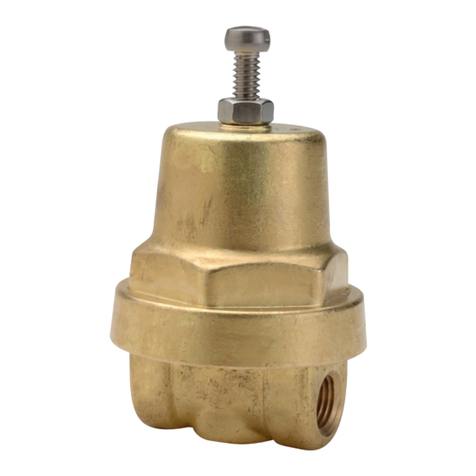
Document Nr.: A6.5.012 Rev 02 Replacement for A6.5.012 Rev 01 Date: 22.08.2005 DWG Nr.: TX6EA001000/PCN 861519
Fig. 3:
< 7/8’’ / 22 mm ∅≥7/8’’ / 22 mm ∅
Fig. 4:
Fig. 5:
P
T (°C) - T (°C) = sh (K)
PS
Fig. 6:
10°C 0°C -10°C -20°C -30°C -40°C
R 134a
TX6-_ _2, 3 1,2 1,6 2,1 2,8
TX6-_ _4, 5, 6, 7 1,9 2,5 3,3 4,5
R 22
TX6-_ _2, 3 0,8 1,0 1,3 1,7 2,3 3,3
TX6-_ _4, 5, 6, 7 1,3 1,7 2,1 2,8 3,7 5,1
R 410A
TX6-_ _2, 3 0.5 0.7 0.9 1,1 1,5 2,1
TX6-_ _4, 5, 6, 7 0.9 1,1 1,4 1,8 2,4 3,3
R 407C
TX6-_ _2, 3 0,8 1,0 1,4 1,9
TX6-_ _4, 5, 6, 7 1,3 1,7 2,2 3,0
tube d'égalisation de pression sur l'aspiration commune
entre la vanne 4 voies et la bouteille anti-coups (si utilisée)
ou le compresseur et placer le bulbe à proximité comme
indiqué sur Fig 2..
6. Le positionnement du bulbe sur la tuyauterie est
fonction du diamètre du tube (voir Fig. 3)
7. Assurez vous que l'égalisation externe ne puisse pas
drainer l'huile vers la tête.
8. Le détendeur ne doit pas être contaminé, en amont,
installer un filtre déshydrateur Alco.
9. Faire un controle de l'étanchéité, vérifier que la charge
est suffisante et qu'il n'y a pas de flash gaz avant de
contrôler le fonctionnement du système.
Recherché de fuite :
Après avoir fini l'installation, procéder à un test de pression
- en conformité avec la norme EN 378 pour les systèmes
qui doivent répondre à la directive pression CE 97/23
- à la pression maxi de fonctionnement pour les autres
systèmes ou applications.
Utilisation, charge du train thermostatique
La température maxi du bulbe est limitée suivant les
valeurs de la Fig. 1.
Attention: les détendeurs avec charge gaz et fonction
MOP fonctionnent correctement seulement si la
température du bulbe est inférieure à celle de la tête et
du capillaire (voir Fig. 4). Un disfonctionnement
apparaît si la tête devient plus froide que le bulbe
(pression d'aspiration trop faible et surchauffe élevée)
Réglage de la surchauffe (Fig. 5, 6)
Le détendeur TX6 est réglé en usine avec une surchauffe
statique de 3,3 K.
Si la surchauffe doit être modifiée, procéder comme suit:
1. Enlever le capot d’étanchéité situé sur le bas.
2. Tourner la vis de réglage dans le sens horaire pour
augmentation de surchauffe et sens inverse pour
diminution. La variation de surchauffe obtenue par tour est
fonction du réfrigérant et de la température d’évaporation
(voir Fig.6). Un temps de 30 min est nécessaire après le
réglage pour obtenir une stabilisation.
3. La surchauffe doit être lue suivant la méthode Fig.5.
4. Remettre en place et serrer correctement le capot
d’étanchéité.
Attention: au maximum 10 tours de réglage sont
possibles de la butée arrière vers la butée avant. Un
excès de force sur la vis peut entraîner une
détérioration.
linea di aspirazione. In applicazioni di pompa di calore,
collegare l’equalizzazione esterna della valvola alla
tubazione di aspirazione tra la valvola di inversione ciclo (4
vie) ed il separatore di liquido (se presente) o il
compressore stesso e posizionare il bulbo nelle vicinanze
come da fig. 2.
6. La posizione del bulbo sulla tubazione di aspirazione
dipende dal dimatro del tubo stesso (Fig. 3)
7. Assicurarsi che non vi sia travaso di olio dalla tubazione
di aspirazione a quella dell’equalizzatore esterno.
8. La valvola deve essere libera da agenti contaminanti,
acidi e particelle solide. Installare un drier ALCO a monte
della valvola.
9. Verificare che non ci siano perdite di refrigerante, che la
carica di refrigerante sia corretta e che la valvola sia
alimentata esclusivamente con refrigerante liquido, prima di
procedere al controllo della valvola per verificarne il buon
funzionamento.
Prova di tenuta:
Dopo l’installazione deve essere effettuata una prova di
tenuta come di seguito indicato:
- Secondo EN378 per sistemi che devono rispondere alla
Direttiva Europea PED 97/23/EC
- Alla massima pressione di lavoro del sistema per altre
applicazioni
Funzionamento corretto delle diverse cariche
La massima temperatura del bulbo deve essere limitata
ai valori indicati in Fig. 1.
Attenzione: le valvole con carica a gas includono la
funzione MOP e operano correttamente solo se la
temperatura del bulbo è inferiore a quella della testa
della valvola e del tubo capillare (Fig. 4). Se la testa
della valvola diventa più fredda del bulbo o del capillare
di collegamento, vi saranno malfunzionamenti quail ad
esempio pressione di aspiraizone instabile o
surriscaldamento in aspirazione troppo elevato.
Regolazione surriscaldamento (Fig. 5, 6)
La valvola TX6 è tarata in fabbrica con un
surriscaldamento statico di 3,3 K.
Se si deve modificare il surriscaldamento procedere come
di seguito descritto:
1. Rimuovere il dado di tenuta sul fondo della valvola.
2. Ruotare la vite di regolazione in senso orario per
aumentare il surriscaldamento, in senso antiorario per
diminuirlo. Per i cambiamenti di surriscaldamento per ogni
giro dell’ asta riferirsi alla tabella in Fig. 6. Dopo ogni
cambiamento è necessario attendere 30 min. perché il
sistema si stabilizzi.
3. Regolare il surriscaldamento (Fig. 5).
4. Rimontare e bloccare il dado di tenuta.
Attenzione: L’ asta di regolazione dispone di 10 giri per
la variazione del surriscaldamento (dal fermo di destra
a quello di sinistra).
4. Coloque el bulbo en la línea de aspiración tan cerca
como sea posible de la salida del evaporador. Asegurese
de que existe un buen contacto utilizando las abrazaderas
que se incluyen con la válvula. Aisle el bulbo con un
material adecuado.
5. En bombas de calor instale el tubo de igualación
externa de la válvula en la tubería principal de aspiración,
exactamente entre la válvula de 4 vías y el acumulador (
si este está instalado) o el compresor. Coloque el bulbo
de la válvula TX6 tal y como se muestra en la figura 2.
6. La ubicación del bulbo en la línea de aspiración
depende del tamaño de dicha línea (Ver fig. 3).
7. Asegurese de que en la línea de igualación externa no
pueda acumularse el aceite.
8. La válvula de expansión debe mantenerse libre de
cualquier tipo de contaminante. Instale un filtro secador
ALCO a la entrada de la válvula.
9. Como paso previo a la puesta en operación de la
válvula, compruebe que no existen fugas y que hay
suficiente carga de refrigerante en el sistema.
Prueba de fugas:
Una vez finalizada la instalación se deberá de hacer una
prueba de presión:
- Acorde a la EN378 para aquellos sistemas que deban
cumplir con la directiva de equipos a presión 97/23/EC.
- A la máxima presión de trabajo del sistema para el
resto de aplicaciones.
Operación apropiada de las cargas
La temperatura máxima del bulbo esta limitada a los
valores mostrados en la Fig.1.
Advertencia: las válvulas con carga de gas se
caracterizan por incorporan función MOP. Este tipo
de válvulas solo operará apropiadamente si la
temperatura en el bulbo es inferior a la del resto de
componentes de dicha válvula ( elemento termostático
y tubo capilar. Ver Fig. 4). Si la temperatura en la
parte superior del elemento es inferior a la del bulbo,
la válvula puede no funcionar apropiadamente (baja
presión o recalentamiento excesivo).
Ajuste del recalentamiento (figura 5, 6)
La Válvula TX-6 se ajusta en fábrica para un
recalentamiento estático de 3.3 K. Si se requiere
reajustar el recalentamiento proceda como sigue:
1. Extraiga la caperuza de la válvula.
2. Haga girar el tornillo de ajuste en el sentido de las
agujas del reloj si desea aumentar el recalentamiento o
en sentido contrario para reducirlo. La tabla de la
figura 6 indica la variación del recalentamiento por
cada vuelta. Para que el circuito se estabilice después
del ajuste se requieren aproximadamente unos 30
minutos.
3. Ajuste el recalentamiento según la figura 5.
4. Vuelva a colocar y apretar la caperuza.
Atención: Hay un máximo de 10 vueltas del vástago
(entre los dos topes de derecha e izquierda). Una vez
se haya alcanzado el tope, cualquier vuelta adicional
podría dañar la válvula.

